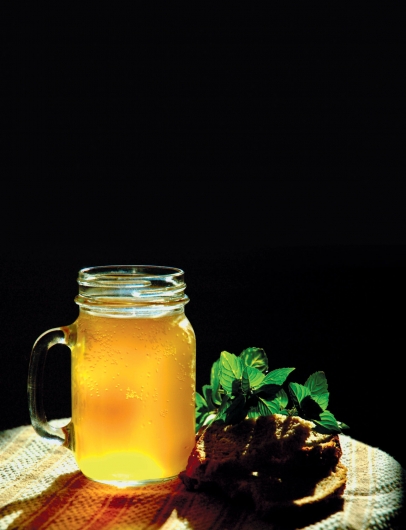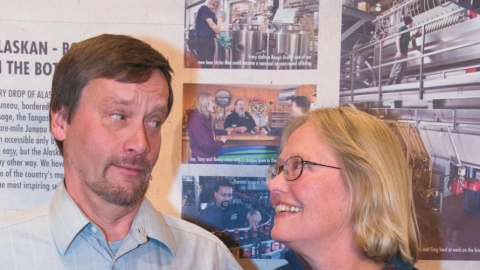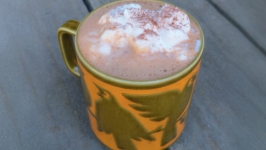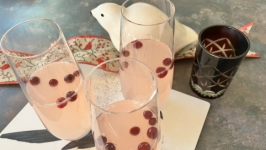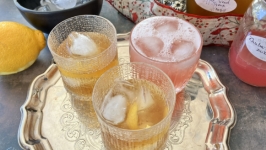Kvas: Liquid Bread
Za Zdaróvje
Nourishing beer is sometimes called “liquid bread.” Kvass, a brew that’s been in Alaska for centuries, is traditionally made with stale bread. It was used as an anti-scorbutic by Russian sailors who introduced it to Aleut people in the late 17th century. Another word for it was mahkoolah, the name of a Russian brewer. In his 1882 report, The Seal-Islands of Alaska, the artist and proto-environmentalist Henry Wood Elliott deemed kvass a “vile product of flour, dried apples, sugar, and water also called mahkoolah after a brewer.” The beverage, fermented in casks, could contain huckleberries, old bread crusts, beets, or molasses. Locals adopted it. Employees of the Russian- American Company (receiving a daily vodka allowance from their bosses) brewed it widely and regularly and imbibed it, especially during Russian Orthodox Christmas, Easter, and weddings. Vendors in Russia still sell it at street stands.
Depending on the ingredients, kvass can look like Hefeweizen or stout, and it tastes yeasty, carbonated, sweet, and sour with citrusy notes. Its alcohol content ranges from 0.7 to 4 percent. According to Sally Fallon Morrell, author of Nourishing Traditions, kvass can be “a tonic for digestion, an excellent thirst quencher, and, consumed after vodka, an antidote to a hangover.” Some people add it to a Slavic version of gazpacho—a cold soup containing cucumbers, ham, dill potatoes, and sour cream.
Kvass is reappearing in Alaska. Julie Meer, a Mat-Su Valley peony farmer and commercial Kvass brewer who runs Farm 779, brews batches that sell out almost every week. Juneau’s Alaskan Brewing Co. even once made a special brew called “Alaskan Survival”: a kvass-style beer created for their participation in a 2014 episode of the television show, Brew Dogs.
You can make your own kvass with leftover sourdough bread. To homebrew, dissolve ¼ cup of sugar in 1 cup of pure water and pour into a sterilized quart-sized jar with 1 cup stale sourdough cubes and 1 teaspoon molasses. Fill jar with pure water to 1 inch below rim. Add some sourdough starter for extra fizz. Seal jar and leave to ripen 4 to 8 days until tart. Burp it daily to avoid an exploding mess. Strain mixture, decanting it into airtight bottles with 1 teaspoon sugar each. Let sit 1 or 2 days at room temperature to carbonate. Chill or serve over ice, but open bottles carefully.
Fermenting is fun, and like kimchi, sauerkraut, kefir, and kombucha, the probiotic bacteria of kvass can boost the gut’s flora, aiding digestion, nutrient absorption, and the immune system. So, bottoms up to liquid bread: To health!


